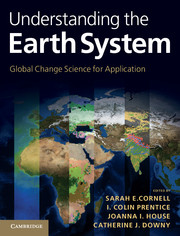Book contents
- Frontmatter
- Contents
- Editors
- Scientific editorial team members
- Contributing authors
- Foreword
- Preface
- Acknowledgements
- Units
- 1 Earth system science and society
- 2 Fundamentals of climate change science
- 3 How has climate responded to natural perturbations?
- 4 The Earth system feedbacks that matter for contemporary climate
- 5 Earth system models
- 6 Climate change impacts and adaptation
- 7 The role of the land biosphere in climate change mitigation
- 8 Society’s responses and knowledge gaps
- Acronyms
- Glossary of terms
- Index
Foreword
Published online by Cambridge University Press: 05 November 2012
- Frontmatter
- Contents
- Editors
- Scientific editorial team members
- Contributing authors
- Foreword
- Preface
- Acknowledgements
- Units
- 1 Earth system science and society
- 2 Fundamentals of climate change science
- 3 How has climate responded to natural perturbations?
- 4 The Earth system feedbacks that matter for contemporary climate
- 5 Earth system models
- 6 Climate change impacts and adaptation
- 7 The role of the land biosphere in climate change mitigation
- 8 Society’s responses and knowledge gaps
- Acronyms
- Glossary of terms
- Index
Summary
In 1999, as the new chief executive of the UK Natural Environment Research Council (NERC), I was struggling to find a simple, high-level description of what the NERC did, to use in discussions with our political masters. A conversation with Professor Chris Rapley (then the director of the British Antarctic Survey, part of the NERC) struck a chord; the Medical Research Council is about understanding how the human body works, NERC is about understanding how the planet works. The NERC does Earth system science. Simple, but was it actually true? Certainly, NERC-funded scientists studied all the components that make up the Earth system, but by and large what we were not doing was studying the interactions between these key components – between the biosphere and the atmosphere for example – and whilst “NERC strives to understand how the planet works” was a convincing argument to use in negotiations with government, in reality we needed to do better. So QUEST was born.
I don’t remember who first suggested a NERC-directed programme in Earth system science (it wasn’t me), but once the idea was floated it seemed blindingly obvious, and Quantifying and Understanding the Earth System emerged from some intense and scientifically exciting discussions among the members of the research community in 2002. I had the privilege of appointing Colin Prentice to be the scientific leader and chair of the QUEST research programme, and the programme itself started in 2003. I retired from NERC in 2005, and lost touch with what the NERC was doing in general, and with QUEST in particular. So it was with pleasure and surprise that I received Sarah Cornell’s e-mail out of the blue in December last year, asking me to write the foreword to this book.
- Type
- Chapter
- Information
- Understanding the Earth SystemGlobal Change Science for Application, pp. xiii - xivPublisher: Cambridge University PressPrint publication year: 2012



